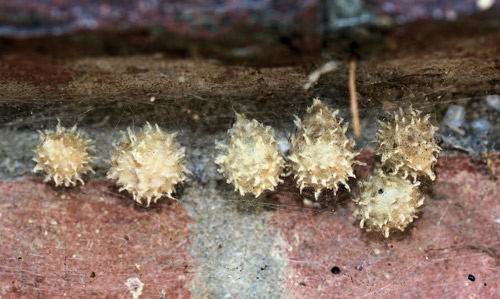Brown Widow Spiders

TO FEAR OR NOT TO FEAR, THAT IS THE QUESTION
By James A. Bethke
Many years ago, I collected black widows, Latrodectus hesperus, from my yard (almost 50) and gave them to Rick Vetter, a friend from the Entomology Department at UC Riverside, so that he could extract spider venom in search of a natural pesticide. Visiting him in the lab one day, I was amazed to see him pick up a small vial with a full-sized adult black widow, uncap it and pull the widow out with his fingers. This is something he did with 400 widows to get enough venom for study. He was never bitten.
I raised them in cages in my home for the love of arachnid behavior and many hours of study, which left my friends aghast and wondering why I would do that with small children in my home. The answer is simple. Widows are far more afraid of us than we are of them. Left alone, they cower and hide fearing death by large predator. They are full of protein and lots of animals know it.
Currently, the brown widow, Latrodectus geometricus, has taken over in my yard, and it’s now difficult to find the black widow. Brown widows tend to inhabit a different environment than the black widow, such as under eaves or window ledges, recessed handles of garden furniture and plastic trash bins. They form a strong protection of webbing where they hide during the day that some call a hammock. Many times, the egg masses are also in the hammocks. In addition, bites are unlikely since brown widows are difficult to contact in their hammocks, and when disturbed, they tightly cower or drop from their web. I have witnessed this behavior when trying to catch them around my home for display and education. They bail out of their little hammock and drop to the ground and try to mimic a piece of dirt, making them very hard to find.
Widow spider bites are quite rare, and few people express severe symptoms. The brown widow is smaller than the black widow and likely injects much less venom during a bite. A study in 2013 showed that 0.8% of people bitten by black widows exhibited severe symptoms and no deaths occurred.
it is not practical to eliminate these spiders completely. Pesticides do not provide significant control for a number of reasons, mostly due to lack of contact. Egg masses are well protected by webbing and only oil-based products or oil-based surfactants have a chance to contact and kill eggs or hatchlings. If you are serious about using a pesticide to control widow spiders, contact a professional, and tell them to use oil-based products or an oil-based surfactant with the pesticide. Regardless, both widow species will continue to re-infest treated areas.
You could physically remove the spiders by eliminating hiding places such as children's toys or playhouses made of molded plastic that have open spaces facing downward where spiders can crawl in. Additional favored habitats of widow spiders include picnic tables, trash can grips, lawn chairs, plant pots with curled lips, and other outdoor objects with sheltered lips. I frequently find them under the edges of my flower pots. If my house is any indication of the number of hiding places and spiders, removing them will be a daunting job.
Before you throw that favorite toy away, weigh the risks verses the benefits of your control methods. Disturbing the spiders may exacerbate the problem, so it may be best to just leave them alone. Chemical pesticides are not very effective, do not last long and can contaminate. So, in my opinion, widow spiders should be respected but not feared.
REFERENCES:
http://ipm.ucanr.edu/PMG/PESTNOTES/pn74149.html (Vetter’s Pest Note)
https://ucanr.edu/blogs/blogcore/postdetail.cfm?postnum=13672
https://cisr.ucr.edu/brown_widow_spider.html
https://www.livescience.com/51014-black-widow-spiders-misconceptions.html
James A. Bethke is a UCANR Farm Advisor - Emeritus

